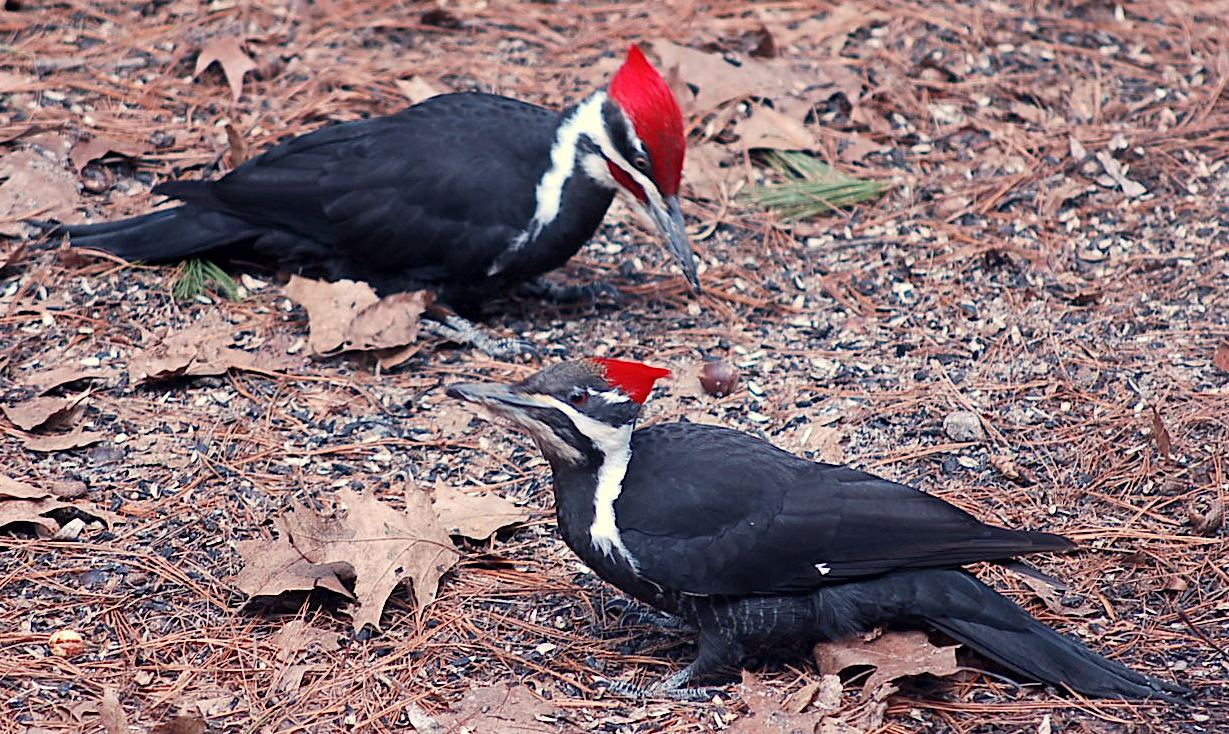Running Into Woodpeckers in Florida: Variety Variety and Recognition
Running Into Woodpeckers in Florida: Variety Variety and Recognition
Blog Article
Discover the Remarkable World of Woodpeckers: Everything You Required to Know
The globe of woodpeckers is a world filled with unique habits, detailed adjustments, and a varied array of species. From their environments and distribution patterns to their feeding habits and specialized anatomical attributes, woodpeckers have long captivated the passion of ornithologists and nature lovers alike.
Woodpecker Habitats and Circulation
Woodpeckers inhabit a diverse series of settings worldwide, showcasing versatility in their circulation patterns. These resistant birds are located in woodlands, timberlands, savannas, and deserts throughout numerous continents, showing their capacity to grow in various weather problems. In The United States and Canada, for instance, woodpeckers can be identified in both coniferous and deciduous woodlands, using their strong beaks to forage for bugs and produce nesting tooth cavities in trees. In Africa, certain woodpecker varieties have actually adapted to arid environments, such as the acacia timberlands, where they play a critical function in managing insect populaces.

Feeding Behaviors and Diet Plan
Woodpeckers use their solid beaks to pierce right into the bark of trees, probing for insects and larvae concealed under the surface area. In addition to insects, woodpeckers also eat nuts, seeds, fruits, and sap.
Woodpeckers are recognized for their drumming habits, which serves not just to connect with other woodpeckers but additionally to situate food. The fast drumming sound is created by the bird pecking on powerful surfaces like dead trees or metal posts. This habits can attract pests concealed in the wood, permitting the woodpecker to identify their visibility and feed upon them.
Special Adjustments for Tree Climbing
In their skilled quest of insects concealed within tree bark, woodpeckers have advanced exceptional anatomical attributes that furnish them with unique adjustments for efficient tree climbing. Among the essential adjustments is their zygodactyl feet, with two toes pointing ahead and two directing backward, giving a strong grasp on tree trunks. This specialized foot dig this setup enables woodpeckers to hold on to vertical surface areas effortlessly, allowing them to find this go up and down trees with agility. In addition, woodpeckers have rigid tail plumes that serve as an encouraging prop while they climb, assisting in balance and stability. Their solid, chisel-like beaks are not only utilized for drilling into timber but likewise for clutching onto bark as they ascend tree trunks. Woodpeckers have strong neck muscles and a special head structure that soak up the effect of constant pecking, enabling them to climb vertically without triggering injury to their brains. These adaptations display the incredible evolutionary design that makes it possible for woodpeckers to browse trees with precision and performance.
Diverse Woodpecker Variety Worldwide
With over 200 various varieties spread throughout numerous environments worldwide, the family members of Picidae incorporates an amazing variety of woodpeckers. These birds can be found in woodlands, timberlands, savannas, and even metropolitan locations, showcasing their adaptability to different settings. From the famous Northern Flicker in The United States And Canada to the vibrant and evasive Crimson-backed Flameback in Asia, each why not find out more woodpecker varieties exhibits distinct qualities in terms of tuft, habits, and habitat choice.
Woodpeckers vary significantly in size, with the petite Downy Woodpecker determining around 6-7 inches in size, while the effective Lineated Woodpecker can rise to 17 inches - Woodpeckers in Florida. Their beaks likewise can be found in various sizes and shapes, mirroring their feeding habits. Some varieties focus on extracting insects from tree bark, like the Acorn Woodpecker, while others, such as the Black-cheeked Woodpecker, prey on fruits and seeds
:max_bytes(150000):strip_icc()/GettyImages-1094628502-a831e9c1be004c05b057f488ff819127.jpg)
Preservation Initiatives and Challenges
Preservation initiatives for woodpecker populaces are essential in reducing the influence of habitat loss and other hazards dealing with these varied bird types. Woodpeckers deal with different difficulties to their survival, primarily due to logging, urbanization, environment change, and invasive types. To resolve these concerns, preservation efforts concentrate on securing and recovering woodpecker habitats, implementing sustainable forestry methods, and increasing recognition regarding the relevance of these birds in communities.
One significant difficulty in woodpecker preservation is the fragmentation of their habitats, resulting in isolated populaces that are extra susceptible to termination - Woodpeckers in Florida. Guardians function to develop wild animals passages and secured locations that attach these fragmented habitats, enabling woodpeckers to move between various locations for feeding, reproducing, and shelter

Verdict
Finally, woodpeckers are fascinating birds with one-of-a-kind adaptations for tree climbing and feeding actions. They can be found in diverse habitats worldwide, facing preservation challenges as a result of environment loss and human activities. Understanding their environments, diet regimens, and habits is vital for preservation initiatives to safeguard these vital bird species. Further research and preservation activities are required to make sure the survival of woodpeckers in the wild.
Report this page